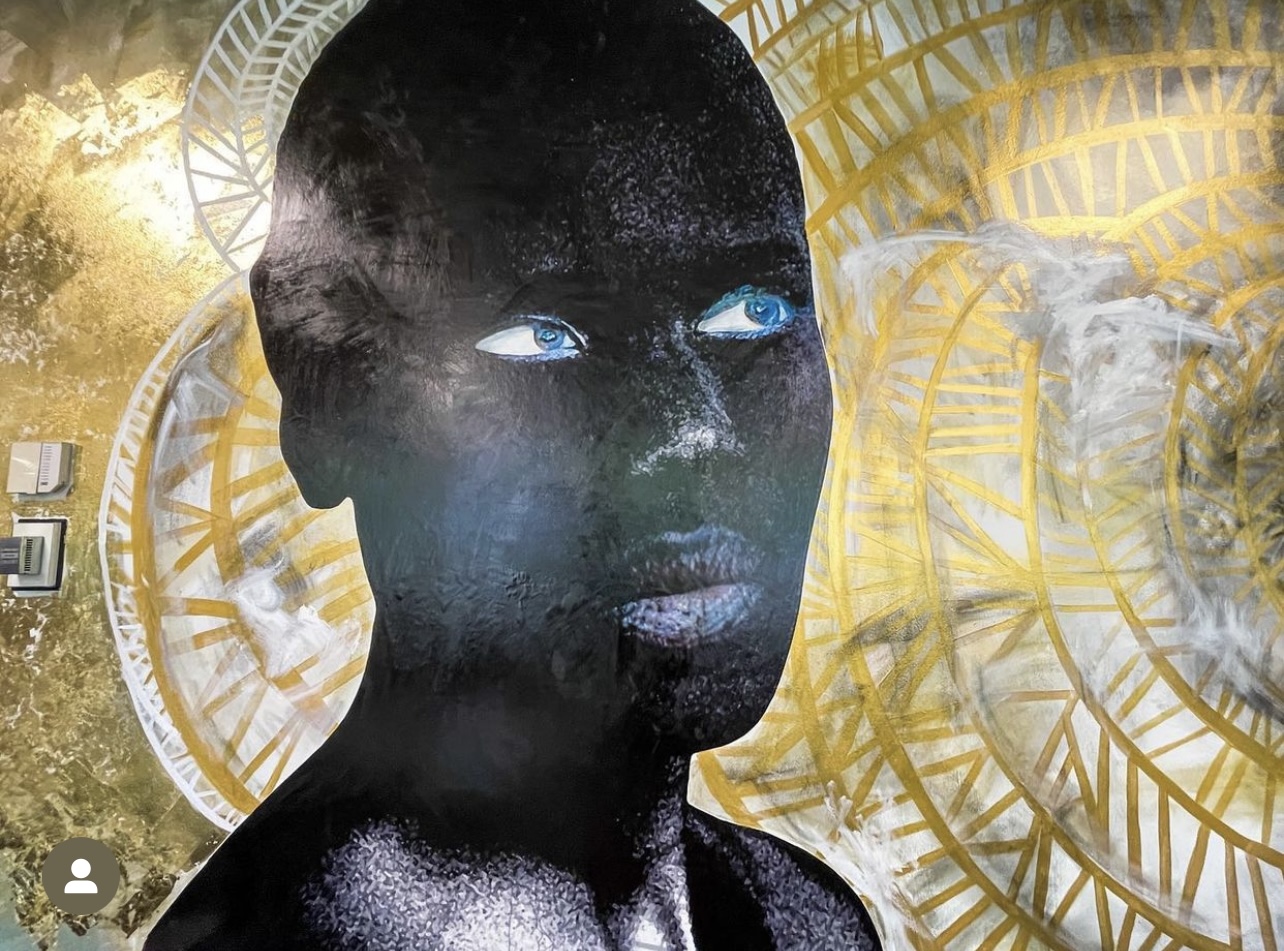Armisey Smith, A Question of Time, 2022, Paint and Polytab on wall, Courtesy of the artist. Photography by Rachel Alban
Artist
About
This mural is part of an ongoing series relating to a series of artifacts which were excavated from a site on the Rutgers Campus. This site (bordered by Halsey, New, Linden and Washington Streets) is the home to the new Honors Living Learning Community. This building was erected over what had been an old car park. Part of this process meant that the site underwent major excavation as a result of physics of new construction (with deep foundations) and much was revealed during this process. Originally there had been a church on this site, which had an adjacent cemetery. The Halsey Street Methodist Episcopal Cemetery was established in 1809 and remained open until the 1870s. It then become a carpark for the Hahnes Department Store, which was one of the major shopping draws for the city of Newark until the 1980s. From this site, 26,606 artifacts were excavated. Over the coming years, the Robeson Galleries will work with people from all walks of life to interpret these materials, and tell various stories about the city of Newark, and in effect, the story of many places like this city. Over the Fall semester this project will unfold, with artifacts, maps and oral histories.
For the inaugural mural we commissioned artist Armisey Smith. Her project is titled “A Question of Time”. This is her statement about the work.
My “A Question of Time” mural expands upon my “Black Person’s Sundial” series, which explores the disruption of time for black and brown people in the Americas. The series and the mural adjacent to the Paul Robeson Gallery depict, via a contemporary lens, time stolen from people of color through the trans-Atlantic slave trade, colonialism of the ancient Americas, and manifest destiny.
With the collective passage of time, interpreted by a sundial, I symbolically agitate time by breaking the symbol apart. The lines are disjointed, and the interpretive sundial is split in half, illuminating the generational trauma of living while black or brown. What would time have looked like if people of color were not displaced? The answer to the question is within the eyes of the subject. She questions the machinations of Europe’s doctrine and, eventually, European-American’s concerted effort to destroy black and brown people by any means necessary.
The introduction of gold paint and gold leaf has a dual meaning; the gold reflects the resources taken from Africa and the Americas to fuel the “Triangular Trade,” better known as the Industrial Revolution. This system, in turn, built generational wealth and power in Europe and America. Antithetical to the plundering of resources, the gold represents African wealth in some forms, namely high status, monetary wealth and royalty, fertility, and spiritual purity. In the ancient Americas, gold was a manifestation of the sacred, and objects fashioned from it were a means of connecting with a supernatural world. Ultimately, the gold symbolizes the reclamation of what was and who we aspire to be, albeit after centuries of maltreatment by Europeans and Euro-Americans.
The Paul Robeson Galleries’ programs are supported, in part, by a grant from the New Jersey Council for the Humanities, The City of Newark (Creative Catalyst Fund), The Geraldine R. Dodge Foundation, and by private donations. We are also supported by Express Newark, Robeson Campus Center, and the Cultural Programming Committee, Rutgers University-Newark.
